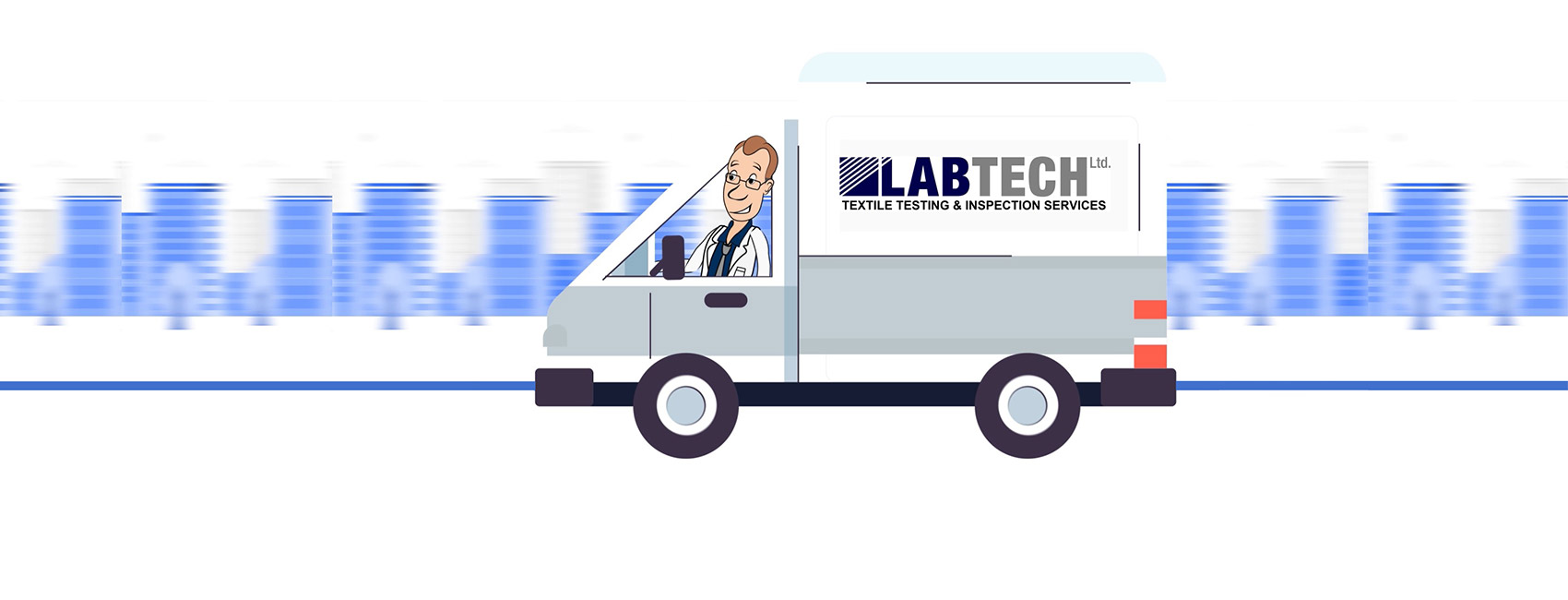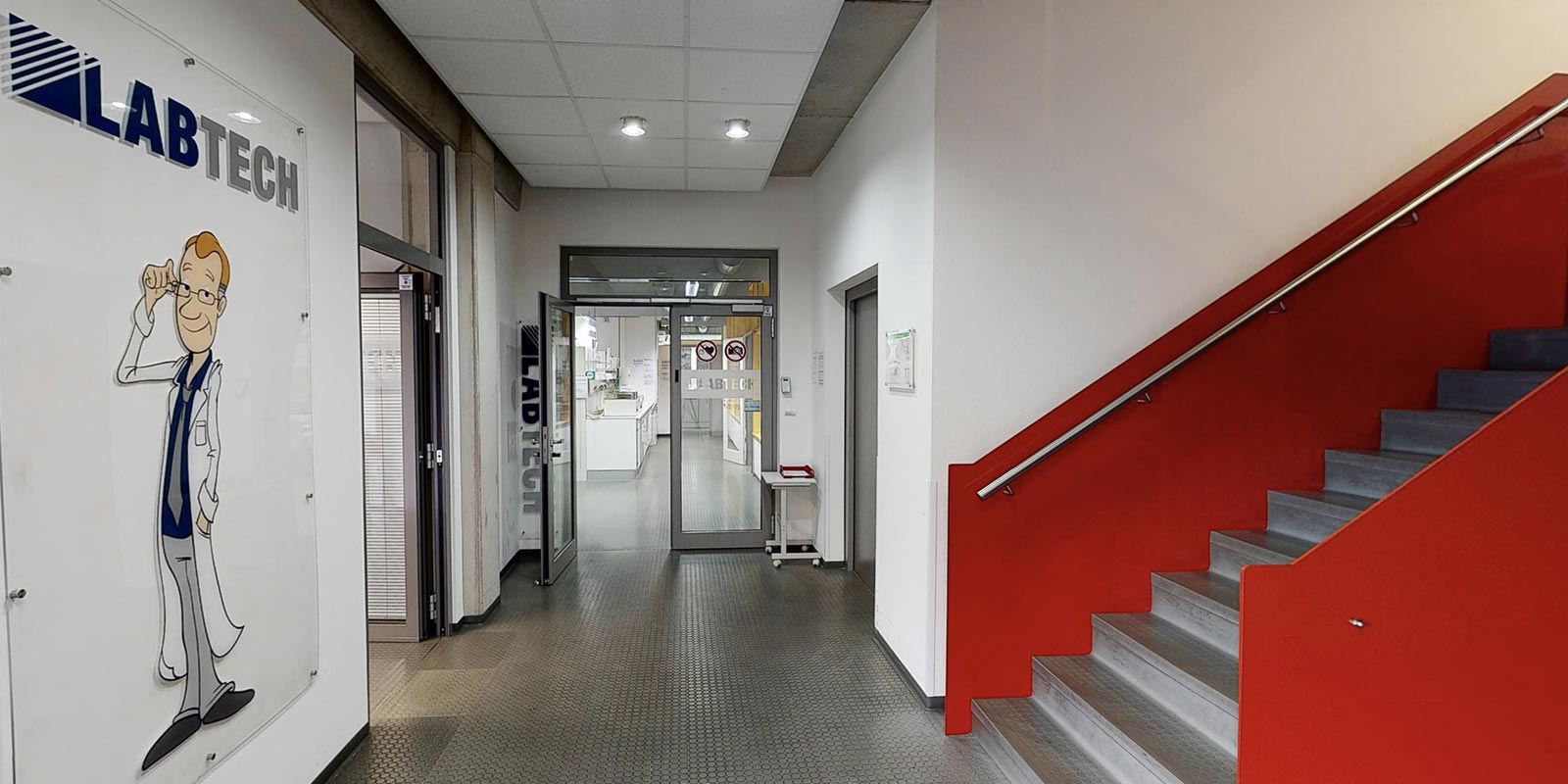Physical tests
Physical tests are all mechanical tests at textiles. These tests provide information’s about the quality of the test item and can clarify the question if the test item is suitable for the purpose of the intended use.
The exakt composition of textiles can be carried out by the fabric analysis. The fabric will be dismantled in his components where the exact determination of fiber components can be defined. Also the sort and amount, fineness and thickness and the weave can be straightly analyzed.
| Fibre analysis qualitative |
House method |
| Fibre analysis quantitative |
DIN EN ISO 1833 |
| Material analysis qualitative |
House method |
| Square weight |
DIN EN 12127 |
| Yarn count |
DIN 53830-3 |
| Yarn type |
House method |
| Number of filaments |
House method |
| Filament count |
House method |
| Weave analysis |
DIN EN ISO 8388 & DIN ISO 9354 |
| Fibre length (cotton) |
DIN 53808 |
| Yarn density |
DIN EN 1049-2 |
| Stitch density |
DIN 14971 |
| Gauge (subjective evaluation) |
House method |
| Crease angle |
DIN 53890 |
| Crease resistance (DP-Rate) |
DIN EN ISO 15487 |
| Zippertest |
DIN EN 16732 |
| Thickness of textiles |
DIN EN ISO 5084 |
| Full dull |
House method |
The strength tests are used to test the resistance of individual textiles. This is not just about tearing out seams or tearing out small parts, but also the determination of the surface resistance under the conditions of use.
| Seam slippage strength |
DIN EN ISO 13936-1/-2 |
| Seam tensile properties |
DIN EN ISO 13935-1/-2 |
| Tear resistance |
DIN EN ISO 13934-1 |
| Tear grown resistance, tear force of trouser-shaped test specimens |
DIN EN ISO 13937-2 |
| Tear grown resistance, tear force of tongue-shaped test specimens |
DIN EN ISO13937-4 |
| Tear grown resistance, tear force using ballistic pendulum method (Elmendorf) |
DIN EN ISO 31937-1 |
| Tearing force of small parts |
DIN EN 71 Part 1 (Chapter 8.4) |
| Loop stength |
DIN EN 15598 |
| Total elongation |
According to DU PONT |
| Elasticity of fabrics (Strip tests) |
DIN EN 14704-1 |
| Snagging |
BS 8479 |
| Abrasion resistance |
DIN EN ISO 12947-2 |
| Pilling acc. to Martindale |
DIN EN ISO 12945-2 |
| ICI Pilling Box |
DIN EN ISO 12945-1 |
| Bursting strength and bursting distension |
DIN EN ISO 13938-2 |
| Tensile strength, Grab methods |
DIN EN ISO 13934-2 |
| Tear-off force |
DIN 53530 |
| Opening force |
House method |
The special features of the textiles are the focus of the functional investigations. For example textiles are often equipped with extra functions, especially in sports. These extra functions can be: water-repellent, air-permeability, breathability or thermoregulations.
| Water column (hydrostatic pressure test) |
DIN EN 20811 |
| Breathability |
ASTM E96 BW |
| Air permeability |
DIN EN ISO 9237 |
| Water repellency / Spray test |
DIN EN ISO 4920 |
| Hydrophilicity TEGEWA drop test |
TEGEWA House method / AATCC 79 |
Velocity of soaking water
(method by determining the rising height) |
DIN 53924 |
| Reflection-Test |
DIN EN ISO 20471 |
| Oil repellency (Teflon-Test) |
DIN EN ISO 14419 |
| Water-vapour resistance (Ret) |
DIN EN ISO 11092 |
| Thermal-vapour resistance (Rct) / Moisture transmission index (im) |
DIN EN ISO 11092 |
The dimensional stability is also called surface stability which evaluates the dimension of textiles after wet or moist treatments.
| Dimensional change according to standard (Wascator) |
DIN EN ISO 3759, 5077, 6330 |
| Dimensional change according to household wash (Miele) |
According to DIN EN ISO 3759, 5077, 6330 |
| Determination of yard goods |
in Anlehnung an DIN EN ISO 6330, 13015 |
| Determination of spirality |
ISO 16322-3 & DIN EN ISO 6330 |
| Dimensional change zipper |
DIN EN 16732 |
The colour fastness tests are used to determine the sensitivity and/or insensitivity of dyeing or printing of textiles against care treatments and their natural use in everyday life.
| Colour fastness to washing (40°C, 60°C, 75°C, 95°C) |
DIN EN ISO 105-C06 |
| Colour fastness to washing 30°C |
House method |
| Colour fastness to domestic laundering |
According to DIN EN ISO 105-C06 |
| Colour fastness to rubbing |
DIN EN ISO 105-X12 |
| Fastness to water |
DIN EN ISO 105-E01 |
| Perspiration fastness alkali/ acid |
DIN EN ISO 105-E04 |
| Fastness to sublimation |
DIN 54056 |
| Fastness to dry cleaning |
DIN EN ISO 105-D01 |
| Fastness to ironing |
DIN EN ISO 105-X11 |
| Fastness to perspiration saliva |
§ 64 LFGB B 82.02-13 & B 82.92-3 & DIN 53160-1 & -2 |
| Fastness to light |
DIN EN ISO 105-B02 |
| Fastness to chlorine water |
DIN EN ISO 105 E03 |
| Fastness to seawater |
DIN EN ISO 105 E02 |
| Colour fastness to solvent |
DIN EN ISO 105 X05 |
| Colour fastness to bleaching |
DIN EN 20105-N01 |
| Colour comparison Datacolor SF 600 |
House method |
| Measurement of colours, standard color values |
House method |
| Measurement of the whiteness |
According to Ganz Griesser & Berger |
| Yellowing of materials |
DIN EN ISO 105-X18 |
| Yellowing of materials, Courtaulds-Test (Storage yellowing) |
House method |
| Fastness to perspiration/light |
DIN EN ISO 105-B07 |
| Colour fastness to spotting: Water |
DIN EN ISO 105-E07 |
| Colour fastness zipper |
DIN EN 16732 |
The suitcase tests were used for testing the durability of processed rolls and the carrier/handle for the load capacity at the seams.
| Handles, shoulder straps test |
According to LGA |
| Suitcase/ bag fall test |
According to LGA |
| Wheel test |
According to LGA |
The inflammability of the current textiles will be tested with the fire test. This tests serve the security of the customers.
| Assessment of the ignitability of upholstered furniture |
DIN EN 1021-1 |
| Assessment of the ignitability of mattressess / smouldering cigarette |
DIN EN 597-1 & DIN EN ISO 12952-1 |
| Assessment of the ignitability of mattresses / Match flame |
DIN EN 597-2 |
| Evaluation of flammability of clothing textiles |
ASTM D 1230 |
| Beilstein test |
House method |
| Tropical test |
House method |
| Odour test |
According to VDA 270 & SNV 195 651 |
| Fasermigration |
House method |
| Cire finish |
House method |
| Safety of childrens clothing |
DIN EN 14682 |
| Hosiery tester |
House method |








